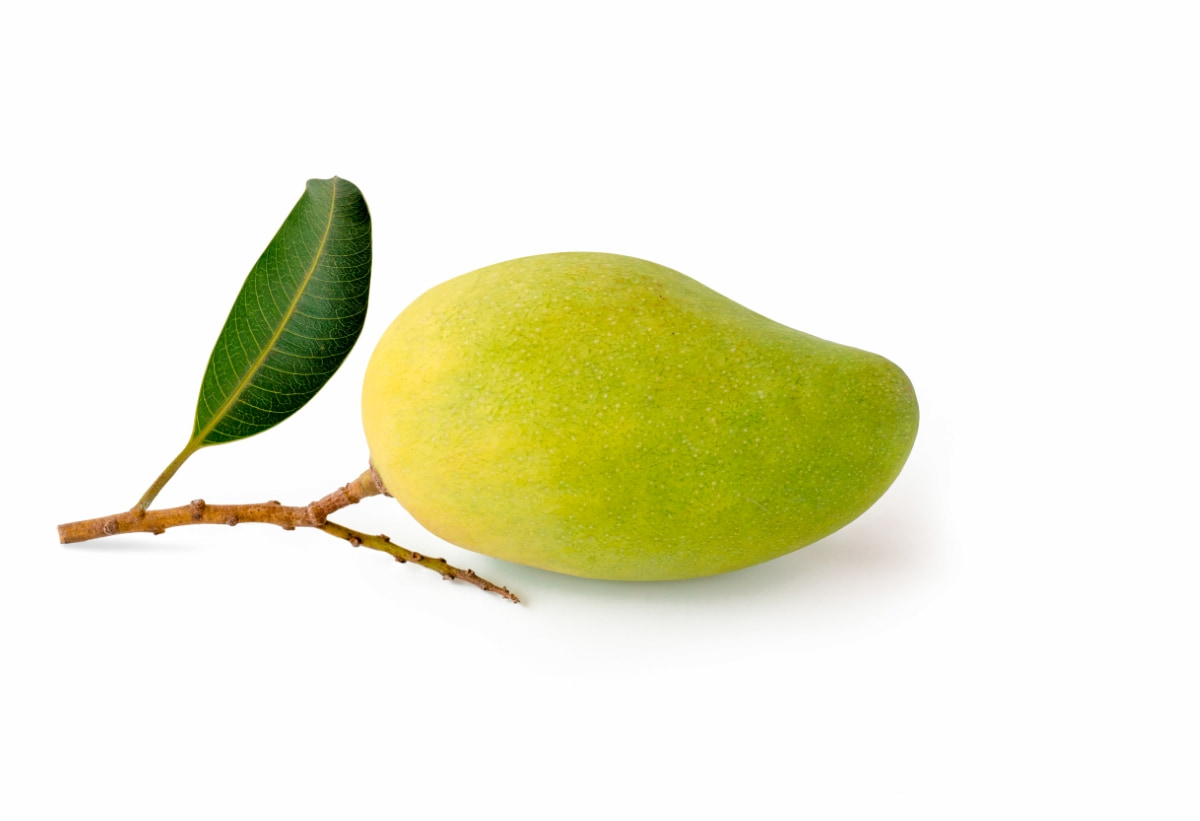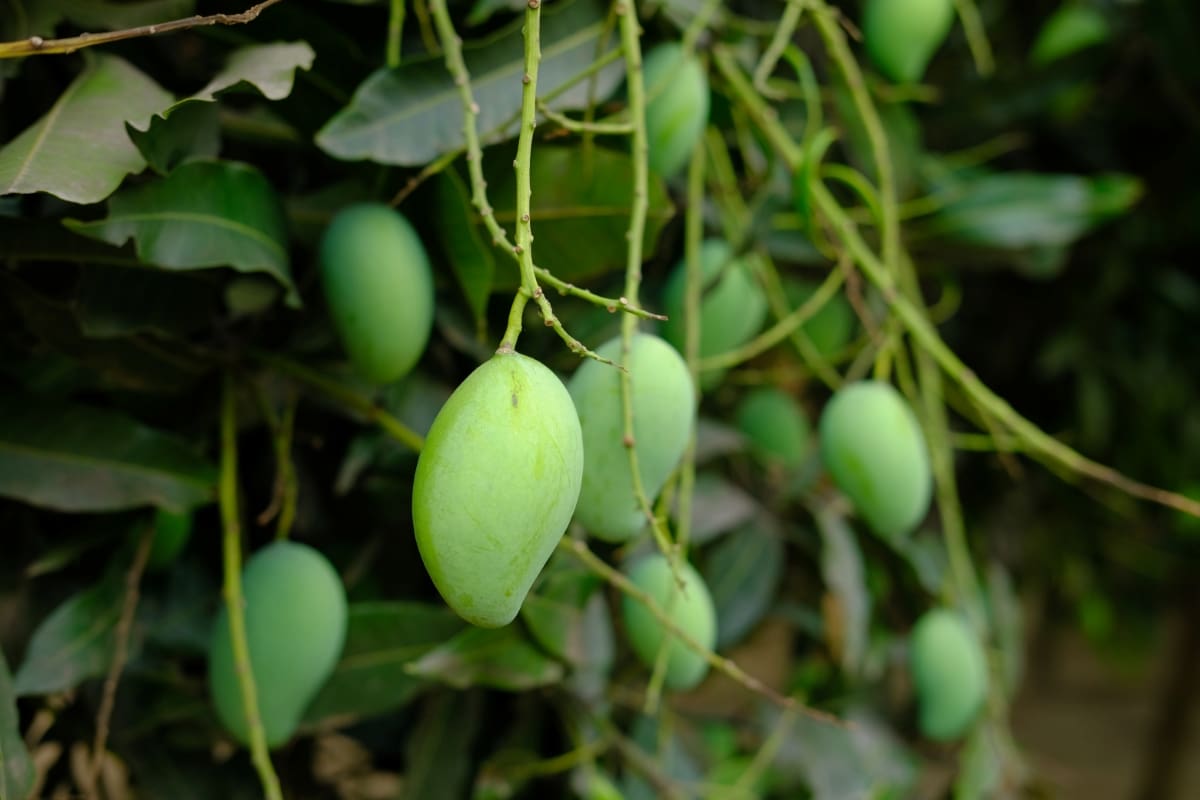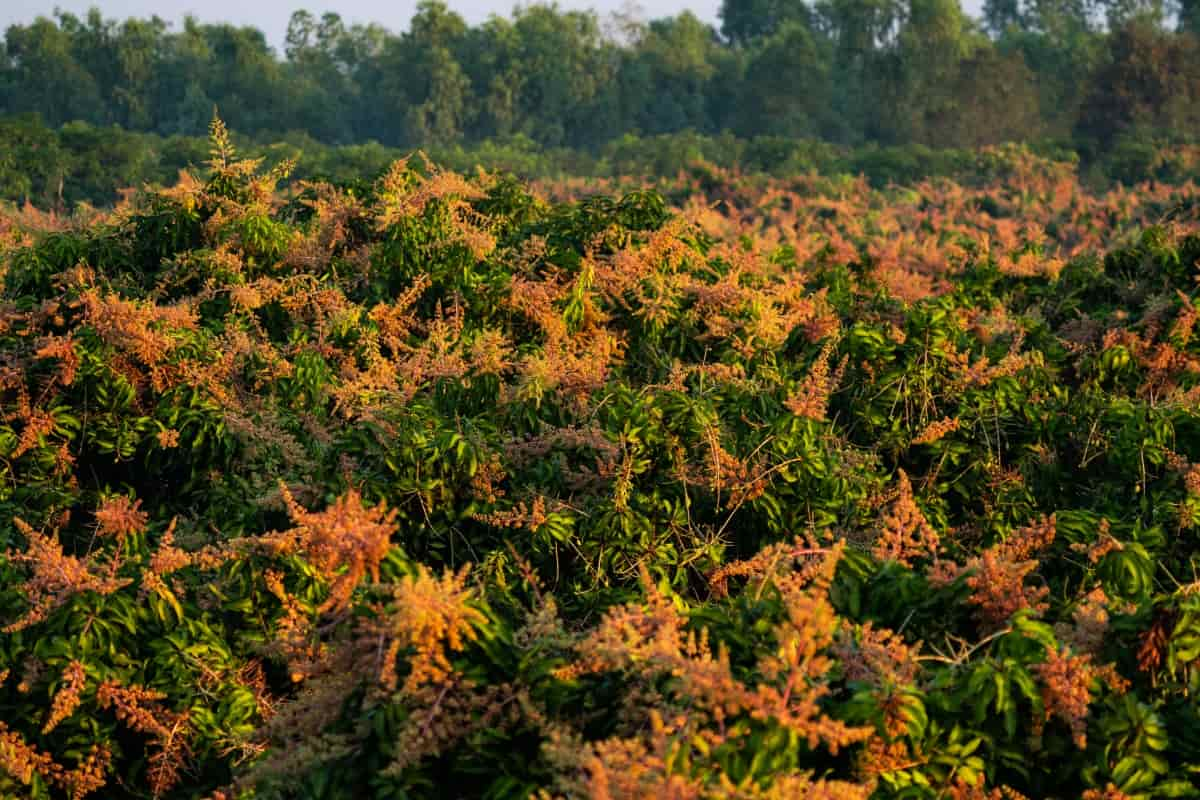Langra mango farming is a popular cultivation practice around the Langra variety of mangoes. Known for its sweet and tangy flavor, Langra mangoes are highly sought after in tropical regions. Successful Langra mango farming requires suitable soil, adequate sunlight, regular irrigation, and pest management. With good care and maintenance, Langra mango farmers can yield an excellent harvest of these delicious fruits.

Langra Mango Farming
What is Langra Mango Farming?
Langra mango farming refers to the agricultural practice of cultivating the Langra mango variety. Langra mangoes are renowned for their sweet, tangy taste and are in high demand in tropical regions. Successful Langra mango farming necessitates optimal soil conditions, ample sunlight exposure, consistent irrigation, and effective pest control measures. By implementing appropriate care and management techniques, farmers can achieve abundant yields of these delectable fruits,
Special Features of Langra Mango
- Langra mango is yellowish-brown in color with a strong smell when ripe.
- It is naturally very sugary and soft compared to other mango varieties.
- The seed of the Langra mango is small and oval.
- It typically enters the market between mid-July to August.
Pits Preparation for Langra Mango
Proper pit preparation is crucial for Langra mango cultivation. Begin by selecting a well-drained location with sufficient sunlight. Dig pits measuring approximately 1.2 meters in depth and width, and fill them with farmyard manure and topsoil. The ideal ratio is 1:1. Add neem cake or bone meal to prevent pest infestation. After filling, allow the pit to settle for a few weeks before planting Langra mango saplings, ensuring proper spacing for optimal growth and yield.
Plantation of Langra Mango Trees
- Selection of Healthy Saplings: When selecting saplings for Langra mangoes, choose a minimum of six months old, with a height of at least 2 feet and a stem diameter of 1 cm. Look for green, healthy leaves and well-developed, disease-free roots.
- Plants Per Acre: The number of plants planted acre in Langra mango farming varies based on the spacing of the trees. Traditional plantations require a spacing of 10×10 meters, accommodating around 82 trees per acre. In ultra-high-density plantations with 3×2 meter spacing, it accommodates 674 plants per acre.
- Age of the Plant when Planted: The age of the plant when planted in Langra mango farming is not variety-specific. A grafted mango tree generally has a productive lifespan of 40-50 years, after which the yield gradually decreases.
- Support and Stacking of Plants: In Langra mango farming, plants require approval and stacking to ensure proper growth. Stakes or trellises support the plants and prevent them from bending or falling over.
Drip Irrigation/ Water Management in Langra Mango
- Drip irrigation is an effective water management technique in Langra mango farming.
- It involves using a network of tubes or pipes with emitters placed near the roots of the mango plants.
- Drip irrigation helps deliver water directly to the root zone area, reducing water wastage and improving water efficiency.
- It helps maintain optimal soil moisture levels for the healthy growth and development of Langra mango trees.
- Proper scheduling and monitoring of drip irrigation ensure adequate water supply while avoiding waterlogging or drought stress.
In case you missed it: Badami Mango Farming: A Comprehensive Guide to Planting, Pruning, Care, and Harvest

Compost/Fertilizers Application Stages
- Pre-planting stage: Incorporate well-decomposed compost or organic matter into the soil to increase its fertility and structure.
- Early growth stage: Apply a balanced NPK fertilizer to support the vigorous growth and development of the mango trees.
- Flowering stage: Use a fertilizer high in phosphorus to enhance flower formation and increase fruit set.
- Fruit development stage: Apply a potassium-rich fertilizer to support fruit enlargement and enhance sweetness.
- Maintenance stage: Regularly apply organic compost or balanced fertilizers to replenish nutrient levels and sustain tree health.
Pruning Stages/Season for Langra Mango
The appropriate time for pruning mango trees is in winter when they are dormant. Prune after fruit harvest and before new growth emerges. Initial pruning should be done when the tree is 1-2 months old.
Flowering Stages for Langra Mango
- Time of Flowering: The Langra mango tree is a mid-season variety, flowering during the initial two weeks of July.
- Factors affecting Flowering: Mango flowering and fruit setting are influenced by various factors such as mango type, tree age, climate, and availability of water and fertilizer.
- Importance of Flowering: Flowering marks the beginning of mango production. Its timing and intensity play a crucial role in determining the quantity and timing of fruit yield in a particular season, contingent upon favorable growth conditions.
- Pollination Techniques: Mango flowers lack specialization, allowing pollination by a wide range of insects essential for fruit production. The production of nectar to attract insects signifies entomophilous pollination, while mango trees do not exhibit adaptations for wind pollination.
Pests and Diseases Management in Langra Mango
Pests and diseases can affect Langra mango trees, and their management is crucial for a healthy crop. Common problems include mango hoppers, fruit flies, and aphids. These can be controlled by applying insecticides, regular pruning, and maintaining proper sanitation in the orchard.
Diseases like anthracnose, powdery mildew, and bacterial black spot can be managed by spraying fungicides, practicing good orchard hygiene, and ensuring adequate air circulation. Regular monitoring, early detection, and prompt treatment are for effective pest and disease management in Langra mango farming.
Harvesting Time and Yield of Langra Mango
The time from fruit set to maturity in mangoes typically ranges from 90 to 120 days. Pole harvesters are utilized for picking fruits without causing damage. Mango grafts bear fruit within 2-3 years, while commercial yields are achievable within 8-10 years, lasting up to 40-60 years. The average Langra Mango yield is around 8 tons per hectare.
In case you missed it: Neelum Mango Farming: A Comprehensive Guide to Planting, Pruning, Care, and Harvest

Conclusion
Langra mango farming is a rewarding endeavor that offers the opportunity to cultivate a popular and flavorful mango variety. With proper care, including suitable pit preparation, selection of healthy saplings, appropriate spacing, irrigation management, and pest and disease control, farmers can achieve successful yields. Langra mangoes, with their distinctive taste and aroma, contribute to the agricultural economy.
- Feed Your Flock for Less: Top 10 Tips to Save on Chicken Feed
- Ultimate Guide to Ossabaw Island Hog: Breeding, Raising, Diet, and Care
- Hatching Answers: The Top 10 Reasons Your Chickens Aren’t Laying Eggs
- Eggs and Economics: Breaking Down the Cost of Raising Backyard Chickens
- Defend Your Greens: Proven Methods to Keep Iguanas Out of Your Garden
- Ultimate Guide to Cinnamon Queen Chicken: A Comprehensive Guide for Beginners
- Ultimate Guide to California Tan Chicken: Breeding, Raising, Diet, Egg-Production and Care
- Ultimate Guide to Marsh Daisy Chicken: Breeding, Raising, Diet, and Care
- 10 Types of Chicken Farming Businesses You Can Start for Profits